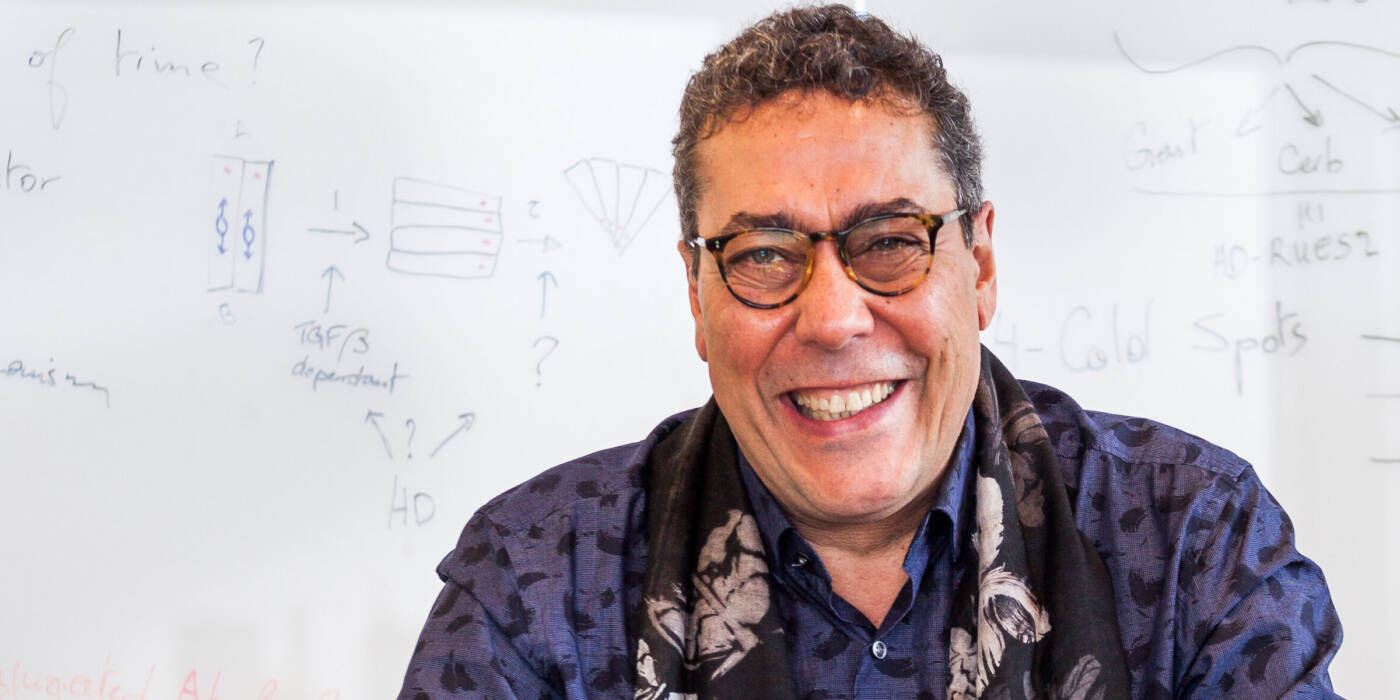Ali H. Brivanlou, Ph.D.
Robert and Harriet Heilbrunn Professor
Brivanlou uses in vitro attached human embryos and genome-edited “synthetic embryos” derived from human embryonic stem cells to unveil the molecular, cellular, and embryological basis of early human development. His studies employ high-resolution quantitative approaches, and span both theoretical physics and molecular embryology. The lab is particularly interested in the emergence of the human brain and modeling neurodegenerative diseases.
A fertilized egg and embryonic stem cells are the only naturally occurring cells that have the potential to generate all cell types in an organism, both of the adult and the embryo. The emergence of discrete cell fates and key structures in the early embryo occurs gradually by cell-to-cell communication that is highly orchestrated in time and space. Brivanlou’s research focuses on deciphering this signaling network. His work has contributed to key discoveries in developmental biology, including the surprising fact that in the absence of signaling from their neighbors, all embryonic cells will default to the same fate and give rise to the most anterior structure of the brain.
Previous work conducted in animal models has provided a strong foundation for Brivanlou’s research involving human embryonic stem cells. Current work focuses on the molecular dissection of embryonic stem cells, including their capacity for self-renewal and their ability to differentiate into a broad range of cell types.
The Brivanlou lab has helped establish a groundbreaking system to study the molecular and cellular processes that occur during human embryo implantation, a critical stage of development when the forming embryo attaches to the uterus. The technique vastly expands scientists’ ability to answer basic questions about human development and understand early pregnancy loss. The work has unveiled an unexpected self-organizing ability of the human embryo that can be studied for up to 14 days of development. This ability can be induced in human embryonic stem cell colonies grown in geometrically defined substrates to generate self-organizing “synthetic embryos” that allow studies after the second week of development.
Fundamental studies in the Brivanlou laboratory are not only offering insights into human reproductive biology and development, but also into specific diseases. Using a self-organizing 3D colony of human cells that mimics the brain, the group has demonstrated that the origin of Huntington’s disease can be traced to the earliest stage of development and the formation of the nervous system, and thus is a developmental disorder that ultimately manifests its destructive effects in adulthood.
As an international leader in the effort to understand the intricacies of human embryonic stem cells and to harness their therapeutic potential, Brivanlou has also played a key role in establishing scientific standards for human embryonic stem cell research. In addition, he and his colleagues have derived several human embryonic stem cell lines that were among the first to be included in the National Registry at the National Institutes of Health, and are now used in laboratories worldwide.
The Brivanlou lab has a tradition of collaborating closely with the theoretical physics groups at Rockefeller. A close and synergistic collaboration for the past decade with Eric D. Siggia has led to the development of high-resolution quantification tools that have been instrumental in studying synthetic human embryos. Brivanlou’s lab has both molecular embryologists and theoretical physicists working side-by-side to unravel the molecular network involved in human development.
Brivanlou is a faculty member in the David Rockefeller Graduate Program, and the Tri-Institutional M.D.-Ph.D. Program.
